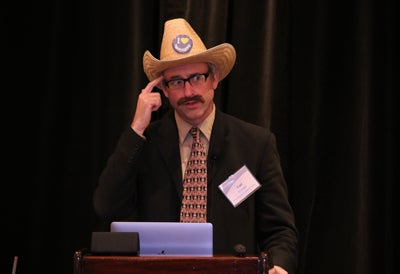
Policy, Systemic Change, and The Dana Center Way
I’ve worked in education policy for nearly 20 years. Which is amazing, because it’s a fluke I work in this field at all. When I was younger, I wanted to be a historian. When I was younger still, I wanted to be a filmmaker. Or a writer. Or a jazz musician. But a policy analyst?
I didn’t even know such a thing existed. I tried cataloguing artifacts in a museum basement and editing together stock footage in a windowless office, but eventually I answered a newspaper ad that landed me in the world of education policy.
Over the course of the next 17 years, I had the privilege of serving at three different education policy organizations, doing fieldwork across the country.
I helped plan and implement programs designed to improve college access for low-income and first-generation college students. I got to present at conferences and to legislative subcommittees, publish policy briefs and progress reports, and collaborate with state policymakers to craft their state-level agendas for higher education.
In short, I thought I had this whole education policy thing figured out.
But that was before I joined the Dana Center.
A Systemic Approach
 From my experience, the goals of nearly all education policy organizations were pretty much the same: increase access, improve student success—and foster upward mobility for students and economic health for states.
From my experience, the goals of nearly all education policy organizations were pretty much the same: increase access, improve student success—and foster upward mobility for students and economic health for states.
Most of these policy organizations had some focus on equity and operated with the best intentions and a sincere concern for the public good.
As those of us who staffed these policy organizations worked to achieve such goals, we were able to establish new programs, launch statewide networks, and even help pass legislation.
Typically, that was where our work ended.
It’s a common way of thinking about policy—convene the working group once or twice, pass the law or rule, and the rest will take care of itself.
But after I joined the Dana Center, I realized that what I used to think of as the end of the policy process was really only the beginning.
The very first draft of a policy paper I wrote for the Center was justifiably (but collegially!) trashed by my supervisor as reading like “a vague policy brief that gives very little actionable advice and does not make a case for an effective process.” She also advised me not to get discouraged because the Dana Center takes an “approach to resources that seems to be fairly unique in education,” adding, “It always takes a while for people to adjust.”
 The first trip I took as a Dana Center staffer exposed me even further to pioneering ways of thinking and problem solving.
The first trip I took as a Dana Center staffer exposed me even further to pioneering ways of thinking and problem solving.
In front of a diverse collection of key stakeholders from across the higher education spectrum, I learned about the Center’s “top down–bottom up”—or, more accurately, systemic—approach to policy change.
What I think of as the “Dana Center way” consciously and strategically engages stakeholders from all components of the system—from system administrators and faculty members to institutional researchers and state agency leaders.
I began to understand what it looked like in practice to enact the Dana Center’s improvement credo of work that is “faculty-led, administrator-supported, policy-enabled, and culturally reinforced.”
I realized we were doing much more than planning for implementation—we also equally emphasized “scaling and sustainability,” “actionable outcomes,” and processes to develop and realize realistic goals.
I heard my new colleagues and project partners ask probing questions and then answer these same questions with specific, detailed next steps—and with long-term plans for implementing the work at a larger scale, always putting students squarely at the center.
Thinking (and Acting) Holistically
While policy work can seem to live in the clouds (or the ivory tower), the Dana Center brings it down to the ground. The Center takes a holistic approach to its work, taking abstract and challenging ideas and—in collaboration with other stakeholders—making them tangible for policymakers and practitioners alike.
The unit of measure is structural change, and the work to achieve that change is undertaken at all levels of higher education and higher education policy. But no matter what, the underlying catalyst for this work must be student success. Uri Treisman conceived of a new approach to student success and founded the Dana Center on these principles from the very beginning.
As far back as 1977, while still a graduate student at the University of California, Berkeley, Uri developed what came to be known as the Emerging Scholars Program—an honors program in calculus for entering freshmen from diverse ethnic and socioeconomic backgrounds.
The program recruited students into intensive workshops that:
- substituted a regimen of hard problems for remedial services;
- developed group cohesion focused on mathematics achievement; and
- blended understanding of the University culture with the learning of mathematics.
Today, you can see these same principles in the DNA of the Dana Center’s work, including the Dana Center Mathematics Pathways (DCMP), launched by the Dana Center in 2012 and where I focus my expertise.
During my first weeks on the job, Uri told me to think of the Center as “connective tissue”—the convener and connector between the many different policy organizations working on issues related to math pathways, equity, and student success.
But I have come to view the Dana Center more as a catalyst for transformative change at all levels of the system. While our mission centers on mathematics and science education, we approach that work systemically and with a focus on sustainable, continual improvement that serves all students.
Helping students learn and succeed is at the center of what we do.
It’s the Dana Center Way.
About the Author
Carl Krueger
My unlikely journey from college dropout to a Master’s degree helped me understand the difficult and unorthodox pathways students take to realize their true passions. Since I began work in education policy over 18 years ago, my passion for helping students successfully navigate the path through college to a career that provides both fulfillment and social mobility has not wavered.
Get in Touch
How can the Dana Center work with you to ensure that our nation's students are ready for postsecondary education and the contemporary workforce?

